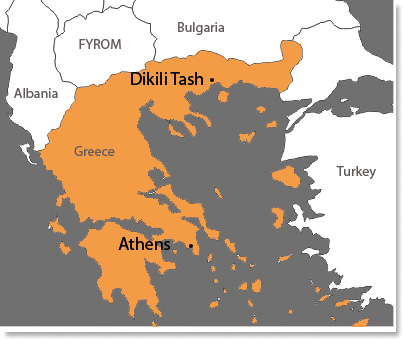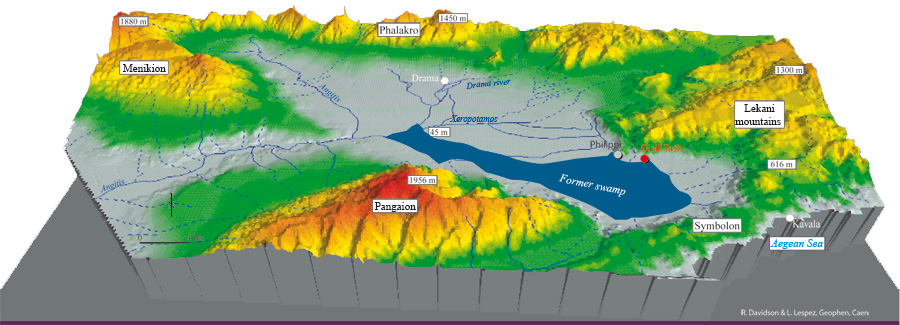Geographical setting
Access

The prehistoric site of Dikili Tash (41°00'37'' N, 24°18’30'' E) is located in the south-eastern part of the plain of Drama in Eastern Macedonia, Greece. It lies approximately 2 km from the ruins of the ancient city of Philippi and within the limits of the modern town of Krinides (Municipality of Kavala).
Natural environment
Until recently, most of the plain was covered by a marsh hat was drained between 1931 and 1940. Its formation dates back to early Prehistory and can be explained by the topography of the plain, which is surrounded on all sides by medium and high mountain ranges (Pangaio, Menoikio, Falakro, Lekani, Symvolo, with altitudes going from 800 to 2000 m). At the foot of these mountains alluvial fans have formed that reach 200 m in height, but in the center of the basin the altitude is only 45 to 80 m above sea level.

While the lower parts of the plain were covered by water, the edges offered many advantages for human settlement : land for cultivation, drinking water, thanks to the numerous springs whose existence is still attested by modern place names (Krinides = small springs, Kefalari = great spring, Vrissoules= little fountains), and access to a variety of environments (marshes, hills, mountains) rich in natural resources of all kinds.
Quite naturally, a series of Neolithic settlements arose along these edges, including Dikili Tash. Dikili Tash had an additional advantage, however: it lies on the only passage around the marsh from the east, which is necessary for communication by land between the northern and southern parts of the plain. The continuity of occupation seems to be directly related to this strategic location: the prehistoric populations were later followed by Greek colonists (Thasians founding the ancient town of Krinides in 360 BC, renamed by Philip II of Macedonia in 356), then by Romans (foundation of the colony of Philippi in 42 BC), Slavs, Ottomans, and finally by modern Greeks in 1923.

